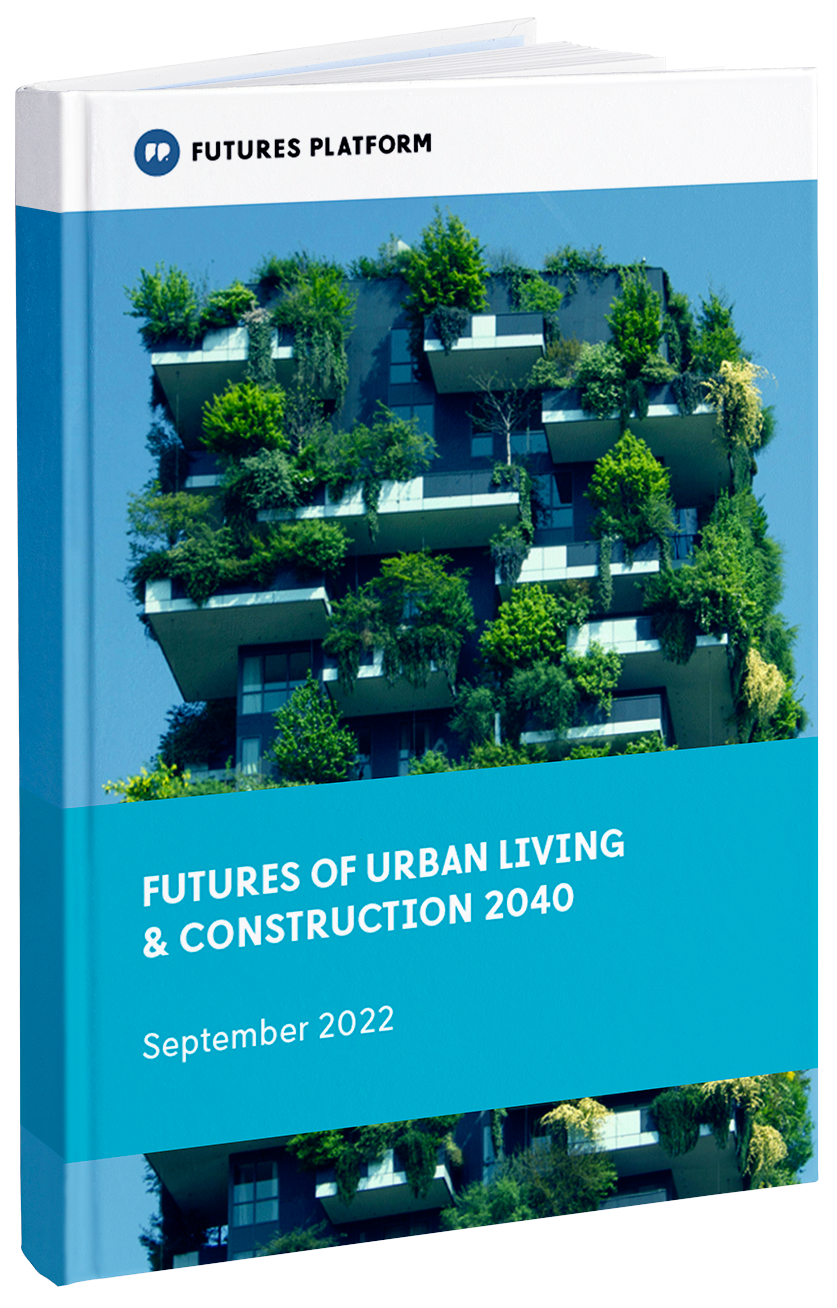Homes Hitting The Road
Will portable homes and domestic tourism shape the future of internation travel?
Source: Photo by Benjamin Zanatta on Unsplash
FUTURE PROOF – BLOG BY FUTURES PLATFORM
Vanlife has been a growing trend among bohemian digital nomads for the past decade, but in the future, the romantic hippie vehicle may be increasingly replaced by ultramodern portable homes with more convenient facilities. And where the world once was an oyster for travellers, they may now be happy only with a slice of that: their local hoods and woods.
If some visions are to believe, the future home is minimal and movable. The fast-changing world with multiple emerging challenges will increase the need for flexible, affordable, and eco-friendly mini-homes that can be moved to almost everywhere.
At the same time, domestic tourism is gaining more popularity with the rising environmental awareness among public. ’Staycations’ – holidays in one’s own country or city – have fewer carbon emissions, are cheaper, and more stress-free to plan.
The collision of these trends could shed some light on the future of travelling.
INDIVIDUALISM, FLEXIBILITY, AND PRIVACY
Portable homes come in different models and sizes. They can be easily movable small pods or bigger houses using modular construction, such as the German Coodo, which can also be turned into a houseboat.
Self-sustainability is a common feature: solar cells or wind turbines are used to produce energy. Recyclable and low-impact materials are often used in construction. These give clear advantages compared to a traditional van.
Just like vans for vanlifers, portable homes fit perfectly for those who favour individuality, flexibility, and minimalism in their travels – and privacy without too many interactions.
HOMELIKE FACILITIES IN THE MIDDLE OF THE WOODS
Nature has become more important for people living in urban areas. Recreational activities have increased their popularity, whether in the form of camping or more glamorous ’glamping’, combining luxury and nature experiences.
Portable homes could provide an easy way to move your entire life to beautiful natural locations to relax and heal without compromising modern-day comforts. Further on, passenger cabins carried by robots or drones could offer access to even more exotic locations for wealthier people. They could spend a night on top of a mountain or in places where there are no roads to get there.
FROM ACCOMMODATION TO PORTABILITY INFRASTRUCTURE
An increase in domestic tourism is economically beneficial for countries, cities, and local entrepreneurs. It is often less reliant on high seasons, spreading around the year. If portable homes become a norm in travelling, countries and cities would need to launch a travel ecosystem and infrastructure different from traditional camping areas. Instead of accommodation services, cities would have to offer attractive locations and services for travellers with portable homes. Instead of Airbnb homes, private people, who own land, could offer exciting spots for a staycation.
Discover insights on 40+ more urban living trends with our in-depth foresight report Futures of Urban Living & Construction 2040.
THE COLLIDING PHENOMENA
To write this article, Futures Platform’s futurists have collected the data from different phenomena and found the linkages among them. Here are the three colliding phenomena that are causing this trend:
Domestic Tourism
Tourism and business travel have been suffering from a significant decrease in travellers due to worldwide quarantines and travel restrictions. In the future, this development may be accelerated by the worsening economic situation everywhere, the rising plane ticket prices, the general awareness of the risk of infection associated with travelling, a newly awakened interest in domestic travel and nature as well as new opportunities provided by remote work and virtual tourism. If the new ways of operating become the norm, it is possible that the previous trend of mass tourism will be replaced with a new trend of domestic and nature travel.
Portable Homes
There are portable homes on the market, with models ranging from self-sustainable houses to easily modifiable homes. Portable houses gain popularity because they offer low-cost and flexible housing in an era characterised by a growing global population, urbanisation, mobility, and environmental challenges.
Isolation Economy
In the isolation economy, people travel less, and most things can be handled from home. As face-to-face social interaction and travel decrease due to fear, necessity or personal choice, the need for technology-based communication channels and internet-based services increases. Remote work innovations, streaming services and online marketplaces thrive and make people’s lives easier. Some disadvantages of long-standing isolation may be the formation of atomic echo chambers and mounting mistrust towards outsiders.
Access more in-depth insights on these and 900+ other future phenomena on Futures Platform’s digital foresight database





